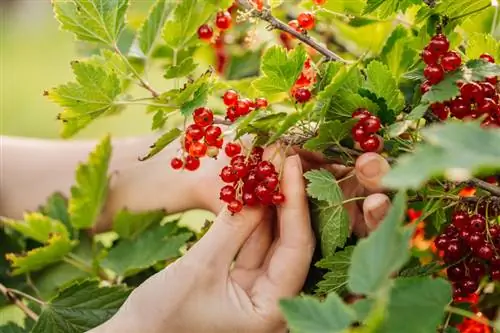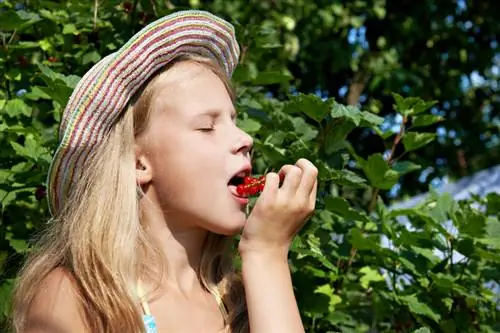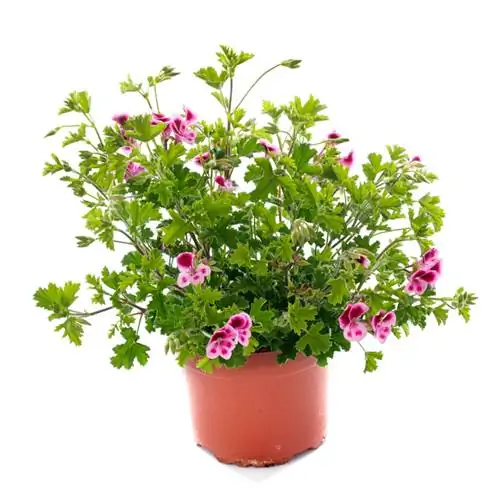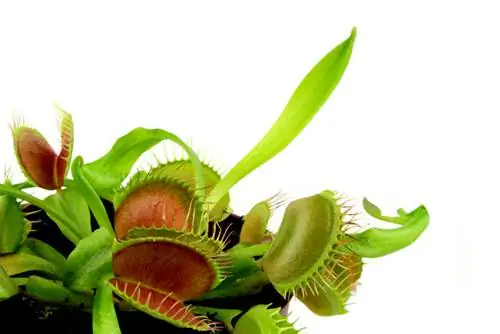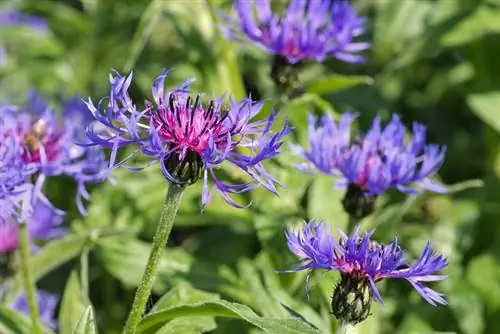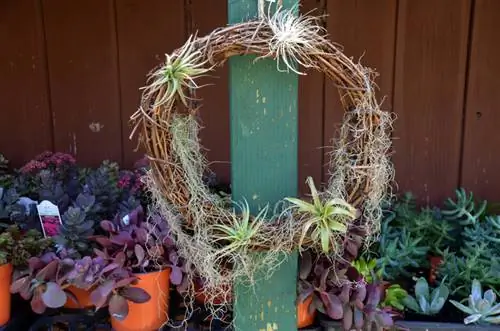- Author admin [email protected].
- Public 2023-12-16 16:46.
- Last modified 2025-01-23 11:20.
Red currants are rightly one of the most popular types of fruit in the garden. Depending on the variety, the red berries are sweet and sour and very he althy. With the right care you will harvest lots of red currants. Things worth knowing about care.
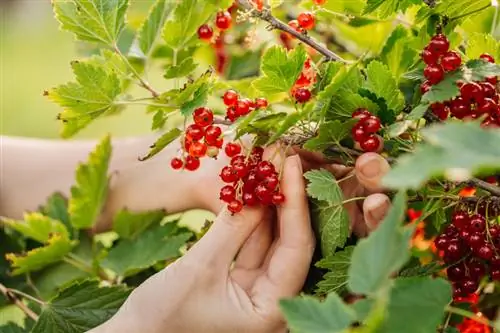
How do I care for red currants properly?
Red currants require regular watering, special berry fertilizer in spring, pruning after harvest and sufficient planting distance. In the first winter, a layer of mulch protects the plants; later, winter protection is only necessary for potted plants. Watch out for pests and fungal infestation.
How to water red currants?
Red currants are shallow-rooted. Their roots don't go very deep. If it hasn't rained for a long time, you need to water the bushes. The best time for watering is early in the morning. If possible, do not pour water on the leaves or directly on the trunk.
Do red currants need additional fertilizer?
As shallow-rooted shrubs often cannot access enough nutrients. Therefore, fertilize them in spring with special fertilizer for berries (€10.00 on Amazon). Shortly before ripeness, stop fertilizing as this can change the taste of the fruit.
If you have nettle manure, you can also use it for red currants.
When and how are red currants cut?
Shrubs are cut immediately after harvest. All old and diseased shoots are cut off at the base and the currant is thinned out.
If you grow red currants as a standard tree, postpone the cutting time until spring, before the plant sprouts.
What diseases can occur?
Fungal diseases in particular cause problems for red currants. You can recognize a fungal infection by the following signs:
- Leaves curl up
- Leaves and shoots dry up
- Leaves get reddish or yellow spots
- whitish layer on the leaves
- Fruits do not ripen but fall off first
- Shoots wilt
Make sure that the red currant is not too moist. Maintain sufficient planting distance.
You should also regularly check the bushes for pests such as aphids, gall wasps, glasswings and gooseberry sawflies.
How are red currants overwintered?
In the first year after planting, you should protect the red currant with a layer of mulch. Later, the red currant only needs winter protection if it is grown in a bucket.
Tip
Red currants can not only be processed in a variety of ways, they also contain a lot of vitamin C and a number of important minerals. The berries taste best when picked fresh from the bush.

